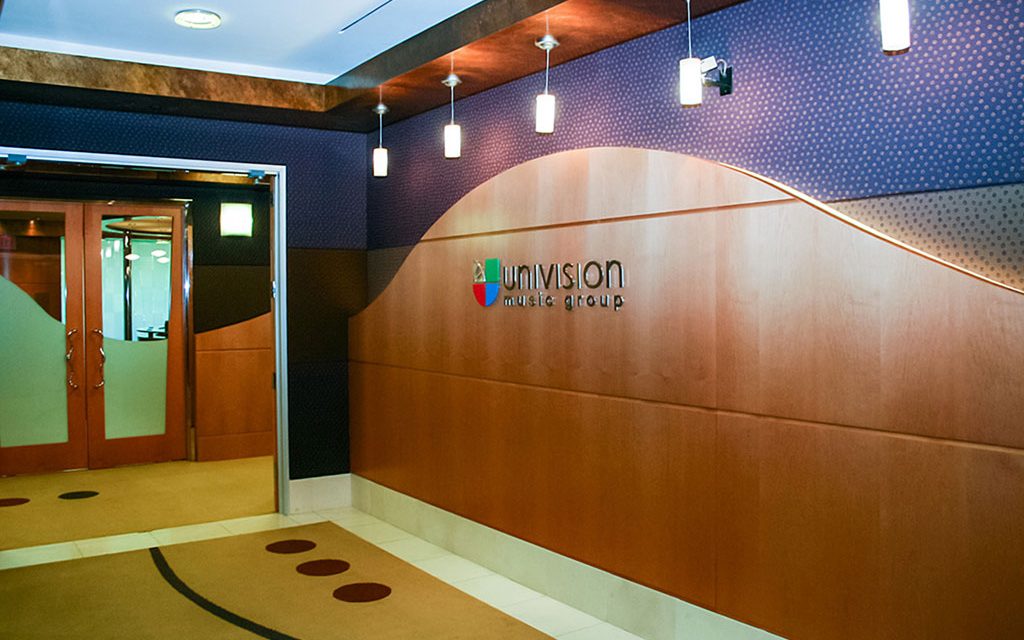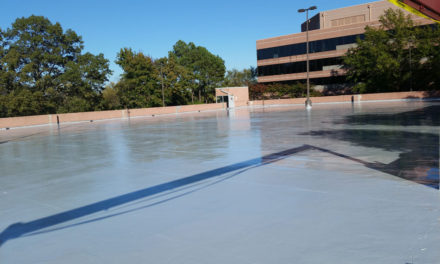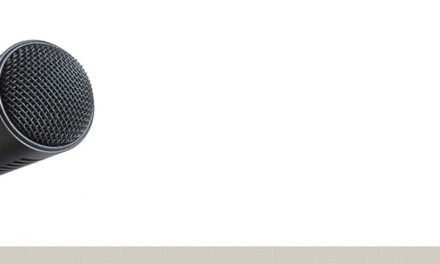New alternative opens a host of creative possibilities, while support is available to tailor the work to specific projects
Architects and interior designers are discovering new creative, functional possibilities by utilizing versatile, performance based, stretched fabric wall finishing systems for commercial and residential work.
The benefit of a stretched fabric wall surface is that it transforms a wall into a beautiful, functional surface. It has acoustical properties that reduce noise and sound transmission through walls; is tackable like a bulletin board; and can withstand high impact in high wear areas so is very low maintenance. The system is also versatile since refreshing the walls or updating the colors requires only changing out the fabric.
A variety of fabric types, colors and patterns are available. Floor-to-ceiling, high definition graphics can be printed on the fabric. Various multi-panel designs can be installed from railroad track designs to abstract, curved, and custom shaped patterns using flexible track. With so many options, site fabricated wall coverings can be used to conform to most architectural features.
Such fabric wall finishing systems are easily installed on site, and ample assistance is available to help with design, specifying, and special circumstances.
Beyond Status Quo
Like a growing number of architect and interior design professionals, Dawn Sophia Ziemer, Principal Interior Designer at Kruger Bensen Ziemer Architects (KBZ), a Santa Barbara, CA based architectural design firm has found that utilizing fabric wall systems such as those from Fabricmate Systems, a global supplier of high performance wall surface solutions, can provide a warm decorative feel along with important functional benefits.
She says that one of the main reasons her architectural clients select fabric wall systems is to improve acoustics. This often involves muffling background noise in a variety of settings to ease conversation.
“Acoustics is a growing area of concern in architectural interior design, so we are always looking for ways to enhance it,” she says. “In open areas including entrances, foyers, and work areas you do not want the sound reverberating off of the walls and ceiling. Deadening the sound makes the space more functional.”
According to Sophia Ziemer, KBZ uses the fabric wall systems in a variety of environments.
“In K-12 through university settings, we often use Fabricmate in classrooms, multi-use rooms, and cafeterias to quiet things so it is easier for kids to hear the teacher and concentrate,” she says. “In municipal work, we have used it in fire stations and a recreation center, usually on walls or ceilings, to quiet background noise.”
To accommodate the diverse needs of design professionals, site-fabricated wall finishing systems can be installed on top of any existing surface, so can be used to quickly refresh a site’s look, or for complete remodels and new installations.
Installation involves panels that consist of three parts: a fabric covering, a backing material, and a fabric mounting frame. The fabric covering is stretched over the backing and held taut by the fabric mounting frame. This allows the panel surface to spring back when struck, effectively mitigating visible damage allowing for years of performance. The excess fabric is rolled into the frame for a clean look. The frame and backing can be reused, and the fabric changed out as desired.
The backing fills in the frame and covers the wall, providing a pinnable bulletin-board like surface for tacking things up, along with impact resistance and the ability to absorb reverberated sound waves that would otherwise bounce off the walls. The fabric mounting frame holds the fabric in place.
Sophia Ziemer says that the capability of the fabric walls to tack up work and designs helps to make wall surfaces more useful to clients and the design community.
“Because the fabric wall can serve as a tackable surface, classrooms often use it to pin up classwork or study aids,” she says. “At universities, we typically use it in dorm lounge areas as attractive bulletin boards to pin up notices. In fact, we often use it to pin up our own design work here at KBZ when we are working on projects.”
From a design perspective, the fabric wall approach is also helping to expand options.
“Clients want more interesting spaces, so we have to be more creative,” says Sophia Ziemer. “Rather than just the typical suspended ceiling application, we are trying to create more interesting ceiling structures. Because the design and functional capabilities of the fabric walls also apply to ceilings, this opens up intriguing possibilities.”
In terms of functional design, however, one of the more successful applications that Sophia Ziemer points to involves a project with curved walls at Ventura Community College in California.

“Fabricmate helped us quite a bit on a big computer commons area with several hundred workstations in a big open space,” she says. “Our acoustical engineer designed a curvy wall to help break up the sound and keep it from bouncing around. He wanted a soft surface on it, so we faced it with stretch wall, which helped to further deaden the sound.”
According to Sophia Ziemer, the fabric wall provider’s assistance helped to tailor the work to the specific project.
The company, for instance, will make recommendations for layout, materials, application methods, installation timing, even product and installation warranty requirements based on the specified aesthetic, acoustical, and functional requirements. This helps to reduce material and labor costs, while keeping the proper materials on-hand to avoid production delays, so the original vision is realized to get it right the first time.
“Early in the design phase, we talked with them and showed them our drawings,” she says. “They helped us write the spec and detail the drawings to the room’s unusual curved contours. Their system adjusts to a wavy, curved surface. The result was better acoustics with sound deadening, plus an interesting visual look that made the client happy.”
For design professionals concerned about ease of installation, installing the wall finishing system can actually be faster than painting when preparation and cleanup is taken into account.
“We can install a typical site fabricated Fabricmate wall finishing system faster than a drywall company can tape it, texture it, and paint it, including drying time,” says Chad Cossey, treasurer and lead foreman at Santa Maria Acoustical Co. Inc., a Grover Beach, CA based acoustical contractor specializing in suspended ceilings, acoustical/tackable wall panel systems, and wall protection systems.
The system can also install over unfinished drywall, so there is no need to mud, texture or prime; just tape the drywall joints. Additionally, the system can adjust to match out-of-true conditions so it can be installed on walls, ceilings, soffits and alcoves with no unsightly gaps.
With a proven design tool at their disposal, innovative fabric wall finishing systems, architects and interior designers can add some much needed creativity and function to their projects, while staying on budget and finishing on time.
For more information, call (866) 622-2996; visit www.fabricmate.com; or write to Fabricmate Systems at 2781 Golf Course Drive, Unit A, Ventura, CA 93003.





